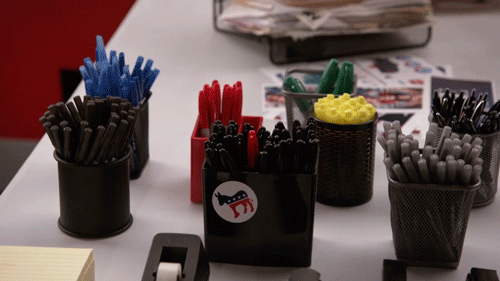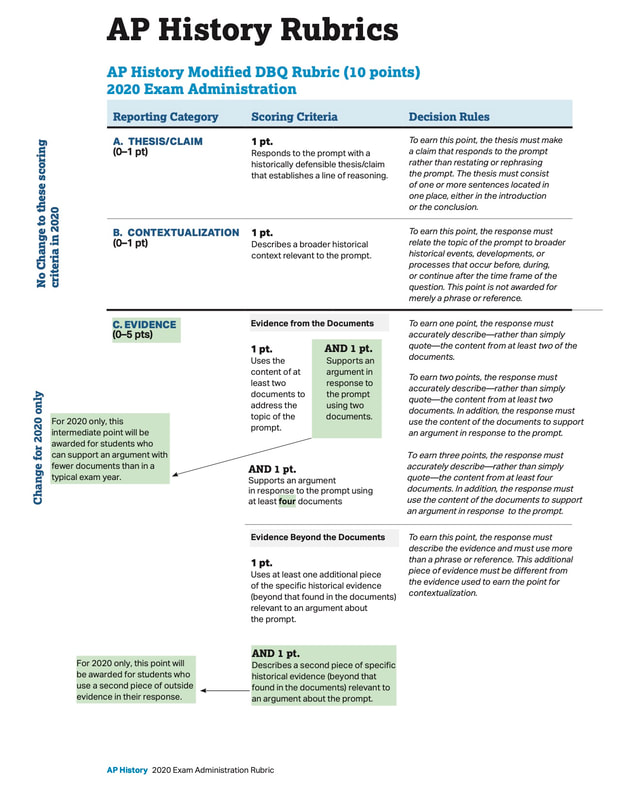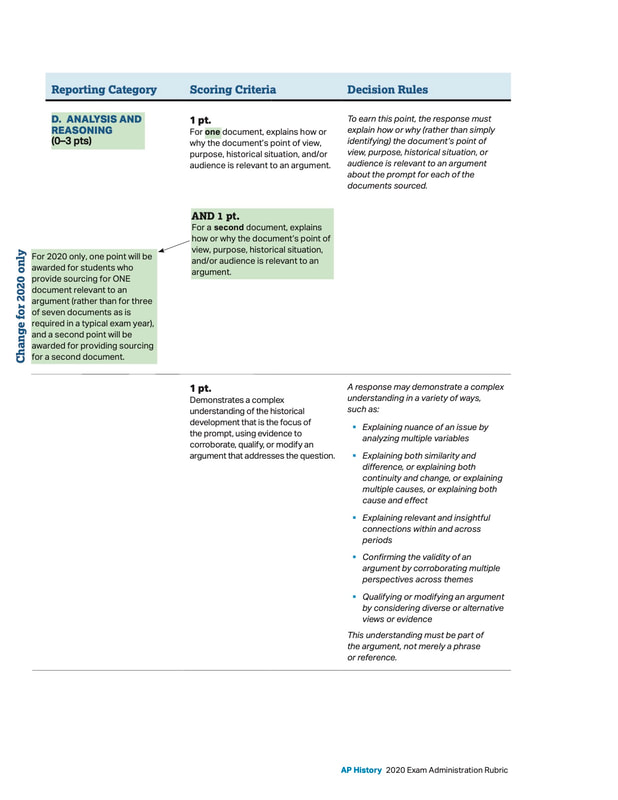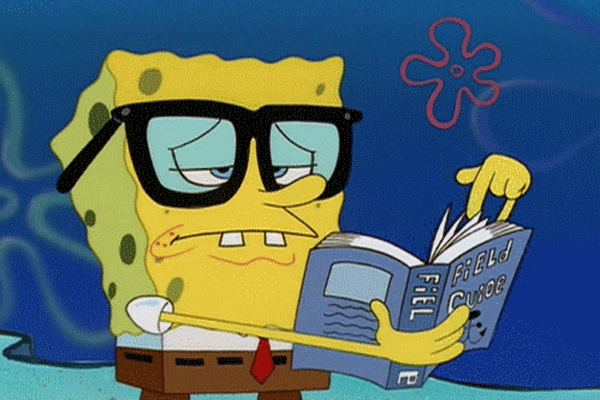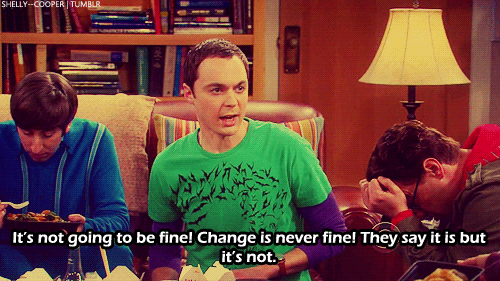Step 1: Don't panic
Step 2: Get organized
|
Organize a quiet workspace to take the exam.
Get your notes organized. Since this exam is taken at home, you are able to use notes (and textbooks, but for time I don't recommend it). We worked on one page review charts for each unit - have those ready with your blank outline. For this exam, you can type or hand-write (I recommend typing). Regardless which you choose, you should have your outline and a pen or pencil at the ready. |
Step 3: Review the requirements
Step 4: Resources for what didn't change
|
The first thing you do when writing your essay should be your thesis. It lays out how you are going to tackle the prompt and argue your points. Get a thesis first. It's only 1 point but it lays out the later points.
|
In the beginning, skip your contextualization for this year. Come back to it as time allows. Nothing later hinges on your contextualization point and it's 1 point out of 10.
|
|
Make sure you don't make some of these mistakes.
|
Do NOT plan your essay around complexity. If you get it, great, if not, oh well. It's a hard point to get and well-written essays often luck into it. Don't worry about this point - it's just 1 out of 10 anyway.
|
Step 5: Ok, what changed?
|
In my opinion, these changes are for the better. You'll have much more opportunity to get points and show what you know. They expanded the points regarding using the documents, outside evidence, and sourcing the documents, while at the same time lowering the requirements since they are giving you less time and fewer documents.
|
Using the Documents
|
You now get 1 point if you describe the content of two documents. Think of this as summarizing a specific piece of evidence from the documents that you intend to use to support your argument. It is not merely quoting. I recommend attempting it for all your documents you use so you get your evidence out of the way and can clearly write your analysis sentences.
|
This video is based on the old rubric, but it has good advice for using the documents.
|
Analyzing the Documents
|
Remember: you aren't just telling us what is in the documents, you are finding a specific piece of evidence within a document and explaining how it supports your claim.
|
You can get up to 2 points for analyzing 4 documents correctly. You will get 1 point if you analyze 2 correctly, and another point if you analyze 2 more correctly.
|
Sourcing the Documents
|
|
In a normal year, we would practice sourcing 4 documents for our essay (because 3 out of 4 is 100%), but this year you get one point for accurately sourcing 1 document and a second point for accurately sourcing a 2nd document.
|
Evidence Beyond the Documents
|
We practiced making sure 1 out of 2 is 100% and what we practiced is actually going to be useful. This year you can get up to two points for evidence beyond the documents. You need to supply something specific and explain how it supports your arguments - be specific! Not just "astronomical tools" but "the compass" or "the astrolabe" or "new and improved maps."
|
|
Step 6: Have a plan
Have a writing strategy because your time is limited. My plan is below and every time I can earn a point I will note it by putting a * near what I am doing. My plan tries to maximize my points early and finish up with whatever remaining points left in the time I have left.
First, I would take about 5 minute to read/skim the documents and create a quick outline. From there I would write my thesis* first. Notice that I am skipping contextualization at this point; no points are built off of it. The thesis, on the other hand, leads to the rest of your essay and your analysis will build off of it.
The second thing I would do would be to go into my first body paragraph. During this body paragraph I would summarize two documents*, analyze both documents*, and do sourcing for both documents**.
Next, I would go into my second body paragraph. In this paragraph I would identify, describe, and analyze two pieces of outside evidence**.
With time remaining, I would write a third body paragraph where I would summarize two documents, analyze both documents*, and source both documents if I had time. If time allows, I might even get to the 5th document. The only reason I am summarizing these documents and sourcing them is to make sure I get the points in case my first attempts don't work.
Finally, if I still have time I would go back and write contextualization*.
First, I would take about 5 minute to read/skim the documents and create a quick outline. From there I would write my thesis* first. Notice that I am skipping contextualization at this point; no points are built off of it. The thesis, on the other hand, leads to the rest of your essay and your analysis will build off of it.
The second thing I would do would be to go into my first body paragraph. During this body paragraph I would summarize two documents*, analyze both documents*, and do sourcing for both documents**.
Next, I would go into my second body paragraph. In this paragraph I would identify, describe, and analyze two pieces of outside evidence**.
With time remaining, I would write a third body paragraph where I would summarize two documents, analyze both documents*, and source both documents if I had time. If time allows, I might even get to the 5th document. The only reason I am summarizing these documents and sourcing them is to make sure I get the points in case my first attempts don't work.
Finally, if I still have time I would go back and write contextualization*.
This strategy would get you one point early with thesis, then try to get as many points as possible with the remaining time by focusing on four points in your first paragraph, then two points in your next paragraph, one point in your optional final paragraph, and one point for contextualization, Notice at no point am I planning for complexity. It's a magical unicorn point that any one who gets it will luck into - again: do not plan your essay around complexity.
|
|
|

